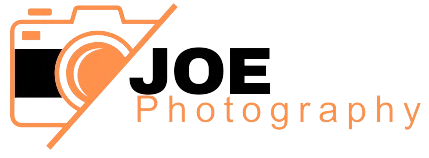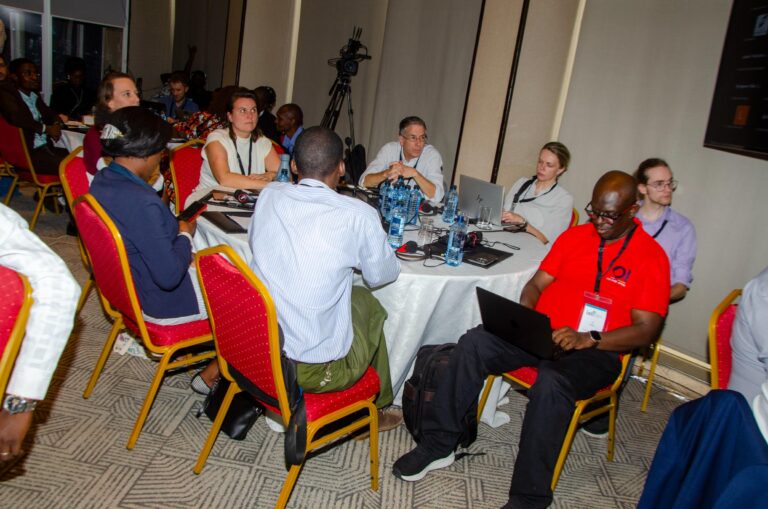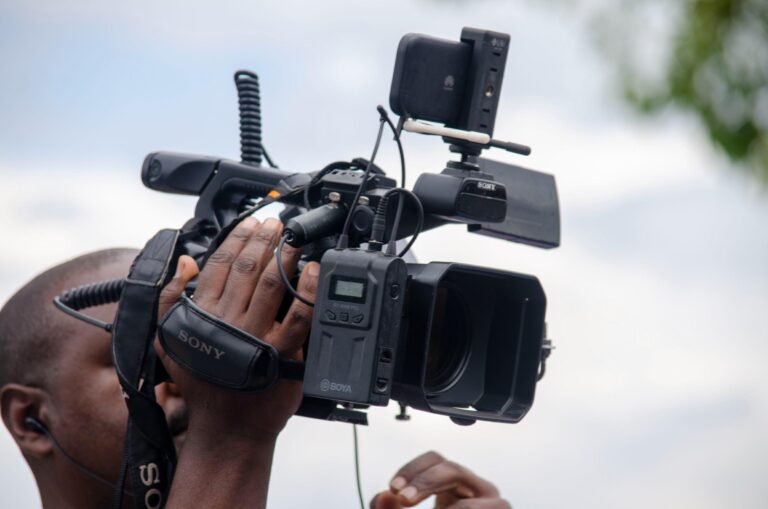In the competitive world of e-commerce and retail, the importance of visually compelling product photography cannot be overstated. Catalog product photography, which involves creating a collection of high-quality images that showcase a brand’s offerings, plays a pivotal role in influencing purchasing decisions. A well-executed catalog not only attracts potential buyers but also instills confidence in the product, leading to higher conversion rates and increased sales.
Table of Contents
The Role of Visual Appeal in Sales
Humans are visual creatures. Research shows that people process images 60,000 times faster than text. When browsing through a catalog, whether physical or digital, the quality of the product images greatly influences the buyer’s perception of the product’s value and desirability. Effective catalog photography leverages this by presenting products in their best light, highlighting features, textures, and details that words alone cannot convey.
A visually stunning catalog creates an emotional connection, compelling customers to imagine owning the product. This emotional engagement can be the tipping point between browsing and purchasing.
How Catalog Photography Builds Brand Trust
High-quality product photography communicates professionalism and attention to detail. When customers see a well-photographed product, they are more likely to trust the brand. Conversely, low-quality images can make a brand appear unprofessional and unreliable, deterring potential buyers.
For instance, a catalog showcasing clear, well-lit images with consistent styling builds a cohesive brand identity. This consistency reassures customers that the brand is dependable, which is especially important in markets like fashion, home décor, and electronics, where buyers often invest significant amounts of money.
Key Elements of Effective Catalog Product Photography
To maximize the impact of catalog product photography, several factors must be considered:
- Lighting and Composition
Proper lighting enhances the product’s features, while composition ensures that the product is presented in an aesthetically pleasing manner. - Background Selection
Neutral or themed backgrounds help focus attention on the product and align with the brand’s identity. - Consistency
A consistent style across all product images creates a professional look, making the catalog easier to navigate and visually appealing. - Angles and Perspectives
Providing multiple views of a product helps customers understand its dimensions and functionality, reducing uncertainty and increasing purchase confidence. - Editing and Post-Production
Professional editing removes imperfections and ensures color accuracy, aligning the images with customer expectations.
Enhancing Online and Offline Catalogs
Catalog product photography is equally effective for online and offline catalogs. In the digital realm, these images are featured on websites, e-commerce platforms, and social media. The more visually appealing and detailed these images are, the higher the likelihood of attracting clicks and conversions.
For offline catalogs, printed images must be of high resolution to maintain their visual appeal. Customers flipping through a catalog at a store or event will be drawn to products that are presented professionally.
Increased Customer Engagement and Conversion Rates
Effective catalog photography does more than just showcase products—it tells a story. A thoughtfully designed catalog with compelling visuals encourages customers to spend more time exploring products, leading to greater engagement.
Moreover, customers are more likely to purchase a product when they feel confident about its quality. Detailed and professional images reduce uncertainty, helping customers make informed decisions, which translates to higher conversion rates.
Case Studies: How Catalog Photography Boosts Sales
- E-commerce Success Stories
Many online retailers report significant sales increases after investing in professional catalog photography. High-quality visuals result in lower product return rates as customers have a clear understanding of what they are buying. - Luxury Brands
For luxury goods, catalog photography is indispensable. It captures the craftsmanship and exclusivity of the product, justifying the premium price point. - Small Businesses
Even small businesses can benefit from catalog photography by standing out in competitive markets. A professional catalog elevates their products and attracts a wider audience.
Partnering with Professional Photographers
Investing in professional catalog product photography ensures that your images meet industry standards. Professional photographers have the expertise, equipment, and experience to bring out the best in your products.
At Joe Photography, we specialize in creating visually stunning product catalogs tailored to your brand’s unique needs. From lighting and styling to post-production, we handle every aspect to ensure your catalog drives sales effectively.
Catalog vs. Creative Product Photography: What’s the Difference?
When showcasing products, the type of photography you choose can significantly impact how your audience perceives your brand. Both catalog and creative product photography serve essential roles, but they are tailored for different purposes. At Joe Photography, we specialize in both styles, helping businesses communicate their vision and captivate their target audience.
Here’s a closer look at the differences between catalog and creative product photography, along with a comparative table to help you decide which suits your needs.
Catalog Product Photography
Catalog photography is all about consistency and clarity. The primary goal is to present products in a straightforward, uniform style, ensuring all items are clearly visible and easily comparable. This style is ideal for e-commerce platforms, printed catalogs, and other listings where simplicity is key.
- Purpose: Inform customers about the product’s features.
- Background: Neutral, often white or light-colored.
- Style: Minimalist, focusing entirely on the product.
Creative Product Photography
Creative photography, on the other hand, takes a more artistic and narrative approach. It aims to evoke emotions, tell a story, and connect with the audience on a deeper level. This style is often used in advertising, branding campaigns, and social media content.
- Purpose: Build a brand image and captivate attention.
- Background: Dynamic, themed, or outdoor settings.
- Style: Experimental, focusing on mood and aesthetics.
Comparison Table: Catalog vs. Creative Product Photography
| Feature | Catalog Photography | Creative Photography |
| Objective | Provide clear, detailed product information | Evoke emotions and create brand narratives |
| Background | Neutral (white/solid colors) | Themed or location-based |
| Lighting | Even and consistent | Varied, often dramatic |
| Style | Minimalist and straightforward | Artistic and experimental |
| Applications | E-commerce, printed catalogs, online listings | Advertising, branding, social media |
| Target Audience | Practical buyers looking for product details | Emotionally-driven buyers inspired by visuals |
| Customization | Limited to uniform presentation | Highly customized to brand identity |
| Focus | Product details and specifications | Mood, lifestyle, and brand story |
| Turnaround Time | Quick, due to standardized setup | Longer, involves conceptualization and staging |
| Cost | Cost-effective for bulk photography | Higher due to creative input and resources |
When to Use Each Style
- Catalog Photography:
Ideal for e-commerce stores, wholesale platforms, and product manuals. If your primary goal is to provide clarity and precision, catalog photography is the way to go. - Creative Photography:
Perfect for branding campaigns, social media, and advertisements. Creative photography captures the essence of your product, aligning it with your brand’s identity and engaging your audience emotionally.
Catalogue Product Photography Tips
Creating high-quality catalog images is essential for showcasing your products and driving sales. Here are some key tips to help you achieve professional and impactful catalog product photography:
1. Invest in Proper Lighting
Good lighting is crucial for clear and appealing product images. Use soft, diffused lighting to eliminate harsh shadows and bring out the details. Natural light or studio lights with softboxes are ideal for consistent and professional results.
2. Use a Clean Background
A simple, clean background ensures that the product is the center of attention. White or light-colored backdrops are commonly used for catalog photography as they make products look sharp and professional.
3. Choose the Right Camera Settings
Set your camera to the appropriate aperture, ISO, and shutter speed. A small aperture (high f-stop) ensures a larger depth of field, keeping the entire product in focus. Use a low ISO to reduce noise and achieve crisp, high-quality images.
4. Pay Attention to Angles
Shoot from multiple angles to give customers a comprehensive view of the product. Include front, back, side, and close-up shots of unique features to help customers make informed decisions.
5. Focus on Product Details
Highlight textures, patterns, and intricate details that make your product stand out. Macro lenses can be particularly useful for capturing fine details in small products like jewelry or electronics.
6. Maintain Consistency
Consistency is key in catalog photography. Use the same lighting, background, angles, and editing style across all images to create a cohesive and professional look for your catalog.
7. Use Tripods for Stability
A tripod helps maintain stability and ensures all images are uniform in composition and angle. It also reduces blurriness caused by shaky hands during long exposures.
8. Edit Your Photos
Post-processing is an essential step in catalog photography. Use photo editing software to adjust brightness, contrast, and sharpness. Remove any imperfections or distractions to present a flawless product.
9. Incorporate Props Sparingly
While catalog photography typically emphasizes the product alone, minimal and relevant props can enhance the visual appeal without taking attention away from the product.
10. Hire a Professional Photographer
For businesses looking to make an impact, hiring a professional photographer ensures high-quality, market-ready images. At Joe Photography, we specialize in catalog product photography, delivering images that highlight your products’ best features and boost your sales potential.
By implementing these tips, you can create a catalog that not only looks professional but also effectively communicates your brand’s value and encourages customers to make purchases.
FAQs on Catalog Product Photography in Kenya
What is catalog product photography?
Catalog product photography focuses on creating clean, professional images of products, typically against a plain background, for use in catalogs, e-commerce websites, and promotional materials. The goal is to highlight the product’s features and details clearly and consistently.
Why is catalog product photography important for my business in Kenya?
High-quality catalog photography ensures that your products look appealing and professional, which builds trust with customers and increases sales. It’s especially crucial for businesses in competitive markets like Nairobi, Mombasa, and Nakuru, where online shopping is growing rapidly.
How much does catalog product photography cost in Kenya?
The cost varies depending on factors like the number of products, the complexity of the shoot, and the location. At Joe Photography, we offer affordable packages tailored to meet the needs of businesses across Kenya. Contact us at 0717563531 for a personalized quote.
What types of products can you photograph for catalogs?
We can photograph a wide range of products, including fashion items, electronics, food, jewelry, furniture, and more. Our team ensures that every product is captured in the best light to meet your catalog needs.
How long does it take to complete a catalog product photography project?
The timeline depends on the scope of the project, including the number of products and editing requirements. Typically, a small project takes a few days, while larger projects may take a week or more. At Joe Photography, we prioritize timely delivery without compromising on quality.
Must Read:



